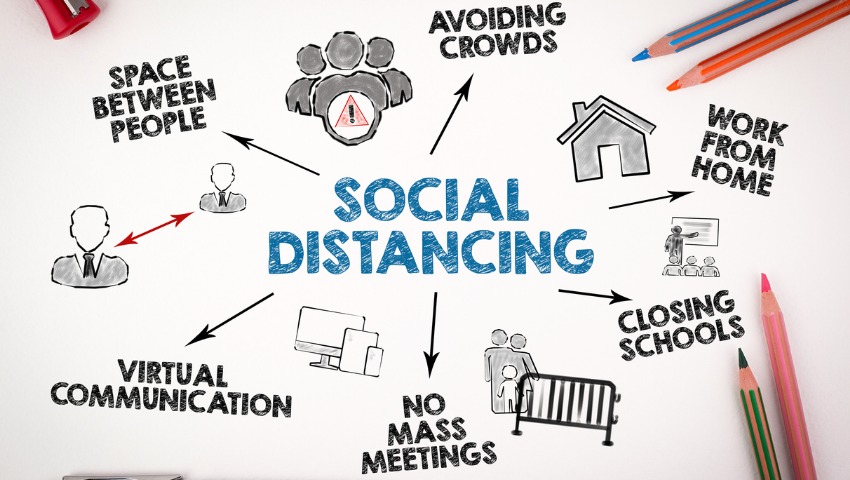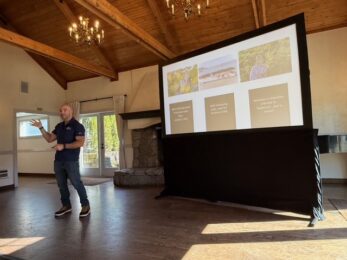Editor’s Note: This is part of a series reporting on FICP Chats about the future of meetings. You can read previous reports here and here.
There are still more questions than answers about meetings and events scheduled for the second half of 2020, and meetings professionals anticipate that the rapid pace of change (regulatory, public health and economic) will require them to reassess circumstances for each event on a case-by-case basis for the foreseeable future. More than 400 participants in last week’s Financial & Insurance Professionals (FICP) Chats agreed this means that communication, flexibility and collaboration will remain the key to individuals, financial and insurance companies, and overall industry success.
In the third of FICP’s new virtual education series, focusing on the rest of the year, participants discussed what the “third-third” of 2020 will look like, including observations from hoteliers and feedback from meetings professionals’ stakeholders. Communities like those within FICP are regularly coming together to document and discuss their most pressing concerns, as well as those that cannot yet be solved, while agreeing to re-convene and continue to work through them in the coming weeks and months.
Obstacles to Collaboration
Participants noted that the uncertainty of current circumstances is creating a vicious circle for meetings professionals and their supplier partners. Meetings professionals are waiting to return to work, in a more traditional sense, to begin work in earnest on their meetings. Hospitality partners are attempting to understand when those meetings professionals will return to staff up and support meetings accordingly. In the interim, furloughs have created a barrier to proceeding with plans in some instances.
Planning for the Unknown
In addition to widely varying and/or unknown timelines for lifting shelter in place orders within and outside the U.S., uncertainty about guidelines for group meetings is creating significant challenges for meetings professionals who are planning Q3 and Q4 meetings and events. For example, will the six-foot distancing guidelines remain, how long should a hotel room or breakout room remain empty before re-use, and when will hotel staffs return and in what numbers? This information will greatly influence a meetings professionals’ ability to confidently plan a meeting, according to participants in the chat.
Capturing Attendee Intent
Participants recommended that meetings professionals proactively seek to understand how many of their qualifiers or colleagues are willing to attend an upcoming event prior to opening registration or sending similar event-related communications. This can be accomplished through a quick pulse-check survey that will not only aid in planning meetings to suit the likely attendance, but will demonstrate a greater empathy for those stakeholders and their individual needs and comfort levels.
Flexible Meeting Options
Recognizing that there will be varying comfort levels with attending in-person events in the coming months, participants discussed the need to host hybrid events to accommodate both those willing to come to the event and those who would prefer a virtual version of the experience. Hotel partners in the chat noted that they can assist with relationships with in-house AV companies, as some are establishing partnerships to facilitate hybrid meetings. Meetings professional participants indicated they would like to have options for increased AV spends considered as part of contracted minimums if lower attendance means lower F&B and room night spends.
Addressing Liability
To help keep those who do convene in person safe, participants noted that each attendee will have a role. They will need to agree to and participate in temperature checks and similar screenings as recommended by the Centers for Disease Control and Prevention, and agree not to attend should they present COVID-19 symptoms. Meetings professionals should be prepared to accommodate those who can’t attend an event due to concerns about their health. Communication about this needs to begin in advance of an event with registrants and be repeated onsite with signage. Similar to retail stores, that signage needs to instruct on how to distance and follow other protocols.
Anticipating Everyone’s Needs
While the focus is understandably first and foremost on health and safety, participants discussed that it is also important to remember diverse needs of event attendees in their planning for upcoming meetings. For example, those with hearing impairments may benefit from clear masks that allow for lip reading, and increased signage with critical instructions should be easily read.
Incentive Outlook for 2021
A consideration for 2021 meetings, according to participants, is the ability for qualifiers to achieve sales goals in the current environment. There may be smaller numbers of incentive program participants as a result. More data on anticipated 2021 and 2022 incentive program activity will be captured in the Incentive Travel Industry Index, powered by SITE Index, Incentive Research Foundation (IRF) and FICP. Results will be available in in late 2020.
Jennifer Squeglia, CMP, is a member of FICP Board of Directors. In the next FICP Chats, our community will focus on virtual meetings. Learn more about upcoming FICP Chats, part of FICP Anytime.




